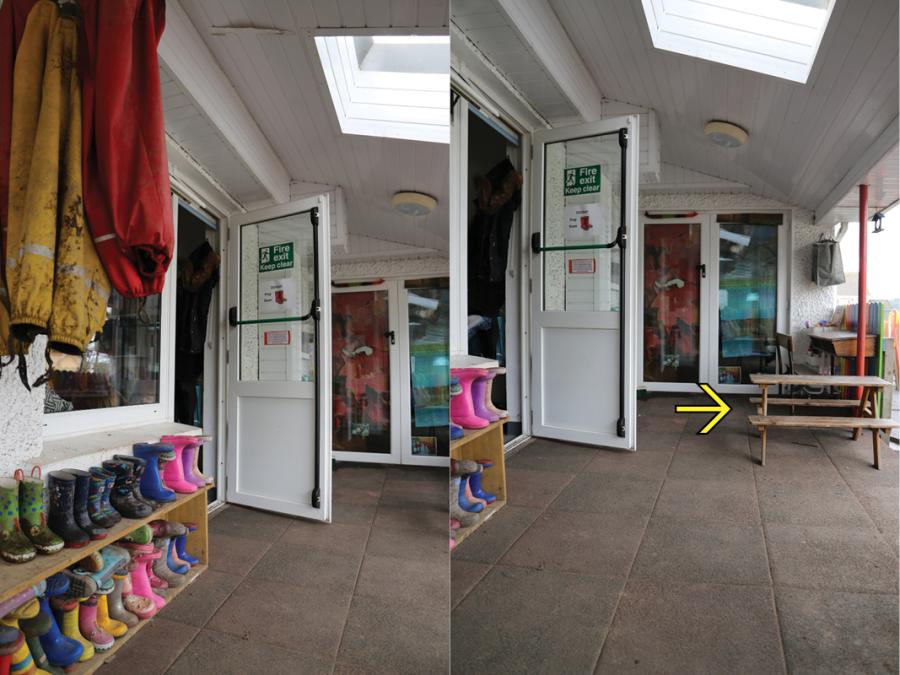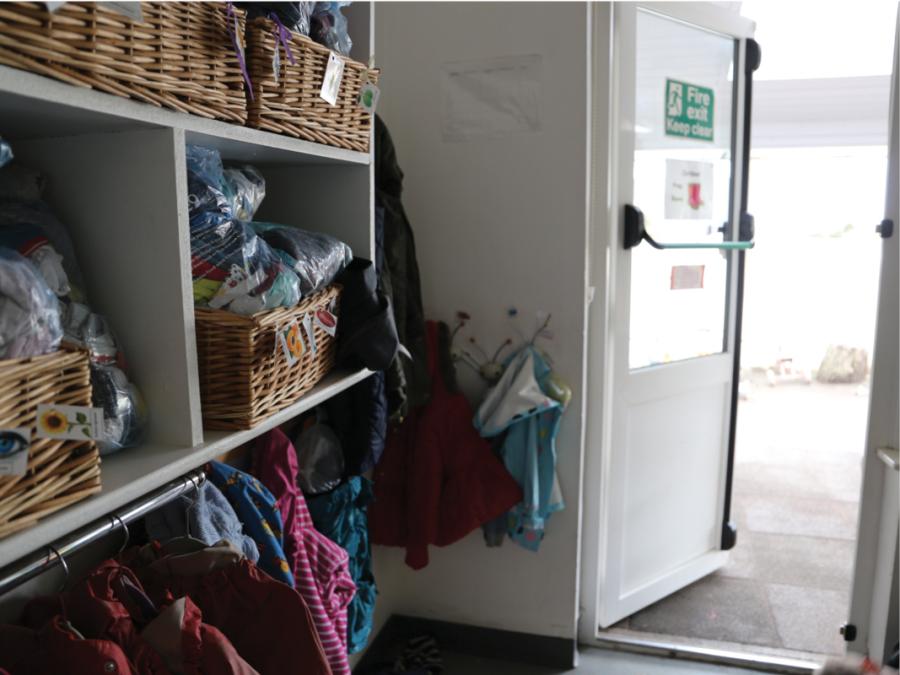Outdoor clothing and footwear changing areas
A dedicated outdoor clothing and footwear changing area that can also be used to store and dry wet gear and boots is helpful in the ELC setting. Depending on the size of the setting, this can be provided as one central space and shared among different age groups, or in larger settings, there may be a few changing areas provided for individual groups. Locating these directly adjacent to the main outdoor area creates a good transition space between the main children’s rooms and outside and provides easy access and egress.
In all cases these spaces must be large enough to cater for the high levels of activity associated with children changing clothes and boots. There will be a combination of children standing, sitting on benches, and sitting or lying on the floor. Consideration should be given to the extra space required for children who may need room to manoeuvre a mobility device, more personal space or a calmer environment. Adequate space will also be needed for staff to assist all children.
The actual amount of space required will be dependent on the size of the setting. Allow space for children to sit on benches or the floor and for adults to move around to assist as required.
Coat hangers and storage shelves should be positioned so they can be reached independently by children, and sufficently spread out so each individual clothing item is clearly visible and accessible. High levels of natural ventilation will provide good drying conditions, especially for items that may get very wet such as waterproof overalls or wellingtons.
If these changing areas are situated adjacent to a covered outdoor space, then this covered space can also be used for storage and drying, especially for items that may get very wet such as waterproof overalls or wellingtons. It is also worth noting that these changing spaces are important social and play areas for children and this should be considered as part of the design.

38. Cheeky Cherubs Early Years Schools, Bishopstown, Cork
Cheeky Cherubs Early Years Schools, Bishopstown, Cork.
Design features
- Direct access from internal outdoor clothing and boots changing area to covered space. This provides drying and storage for wet gear while also providing a transition zone between inside and outside.
- The roof lights ensure there is still good light to the interior of the building, while providing the covered space that provides for shelter and shade.
- Low level seat for children to put on or take off boots (see arrow).

“The garden space is great for children of mixed ages to play.”

39. Cheeky Cherubs Early Years Schools, Bishopstown, Cork
Cheeky Cherubs Early Years Schools, Bishopstown, Cork.
Design features
- Dedicated outdoor clothing storage and changing area adjacent to garden access door. This door leads to a covered area that opens out onto the garden.
- Children’s coats hung at a low level, so they can be independently accessed by children.
Universal Design Guidance
- In small settings the outdoor clothing and footwear changing area can be located in a central area and shared among all children. In larger settings, there may be a few changing areas provided for individual groups.
- Locate these spaces adjacent to the exit point to the main outdoor space to create a transition space to outside and provide easy access and egress.
- Good levels of natural light will help with visibility while direct views to the outside will help children understand that they are getting ready to go outside.
- These spaces must be large enough to cater for high levels of activity. A spacious changing area will support children or staff who may need more room to manoeuvre a wheelchair or mobility aid or more personal space.
- This will also help staff when assisting children.
- Coat hooks, or shelves for clothing items should be located between 900mm to 1100mm maximum above floor level, depending on the age group served.
- Seating benches should be provided for changing clothes and shoes. The seat height of these should be approximately 200mm to 300mm for toddlers, or between 300mm to 425mm for pre-school children and older.
- Handrails and grab bars in the changing area will provide additional support for children if required.




